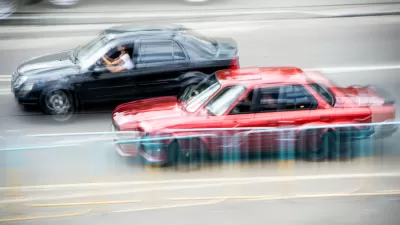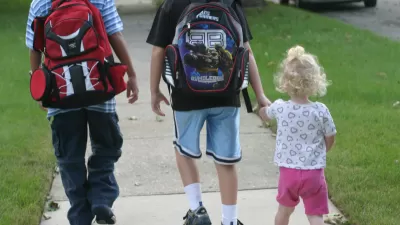Benjamin Ross argues that the walk signal is a fundamentally flawed approach to creating walkable streets and shareable roadways—making walking slower, less convenient, and more dangerous.

Walk signals are meant to make walking safer by sending cars and pedestrians ahead at different times. That means different types of road users receive different sets of information and instructions.
To make streets truly pedestrian-friendly, Benjamin Ross argues, it may be time to rethink that strategy.
"The underlying principle," he says, is that "negotiating the use of shared space makes roads safer."
Ross argues for letting drivers and pedestrians traveling the same direction go at the same time. That kind of system would treat various modes of transportation equally, he says, whereas the timer common to walk signals unfairly pushes pedestrians off the road in favor of drivers.
"Restricting the right to cross the street is intrinsically dangerous," Ross cautions: It teaches users of the road that they have to look out to drivers, but drivers don't have to look out for them.
This piece is part of a three-part series at Greater Greater Washington.
FULL STORY: Walk signals are bad for walking

Alabama: Trump Terminates Settlements for Black Communities Harmed By Raw Sewage
Trump deemed the landmark civil rights agreement “illegal DEI and environmental justice policy.”

Study: Maui’s Plan to Convert Vacation Rentals to Long-Term Housing Could Cause Nearly $1 Billion Economic Loss
The plan would reduce visitor accommodation by 25% resulting in 1,900 jobs lost.

Planetizen Federal Action Tracker
A weekly monitor of how Trump’s orders and actions are impacting planners and planning in America.

Wind Energy on the Rise Despite Federal Policy Reversal
The Trump administration is revoking federal support for renewable energy, but demand for new projects continues unabated.

Passengers Flock to Caltrain After Electrification
The new electric trains are running faster and more reliably, leading to strong ridership growth on the Bay Area rail system.

Texas Churches Rally Behind ‘Yes in God’s Back Yard’ Legislation
Religious leaders want the state to reduce zoning regulations to streamline leasing church-owned land to housing developers.
Urban Design for Planners 1: Software Tools
This six-course series explores essential urban design concepts using open source software and equips planners with the tools they need to participate fully in the urban design process.
Planning for Universal Design
Learn the tools for implementing Universal Design in planning regulations.
Caltrans
Smith Gee Studio
Institute for Housing and Urban Development Studies (IHS)
City of Grandview
Harvard GSD Executive Education
Toledo-Lucas County Plan Commissions
Salt Lake City
NYU Wagner Graduate School of Public Service





























